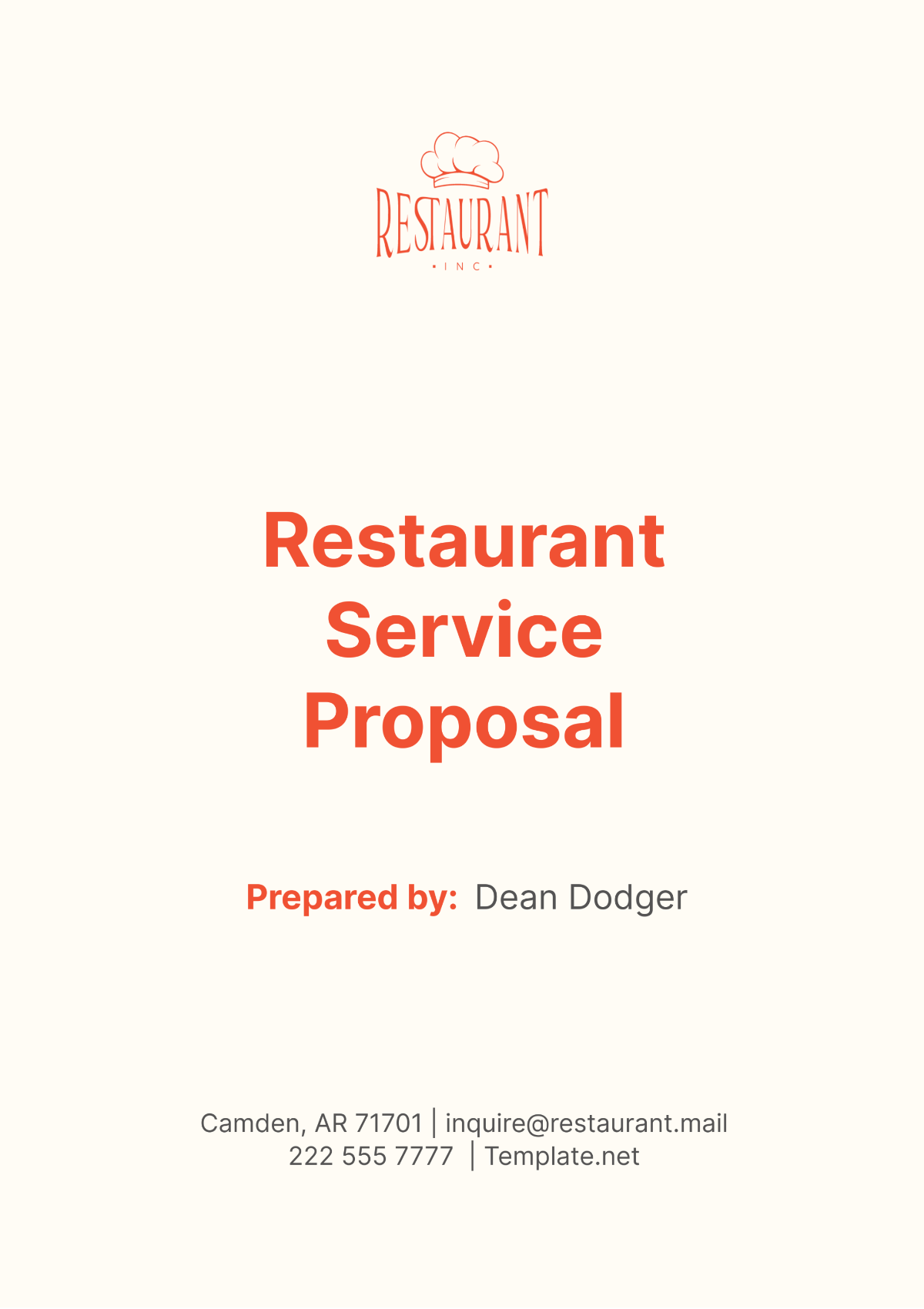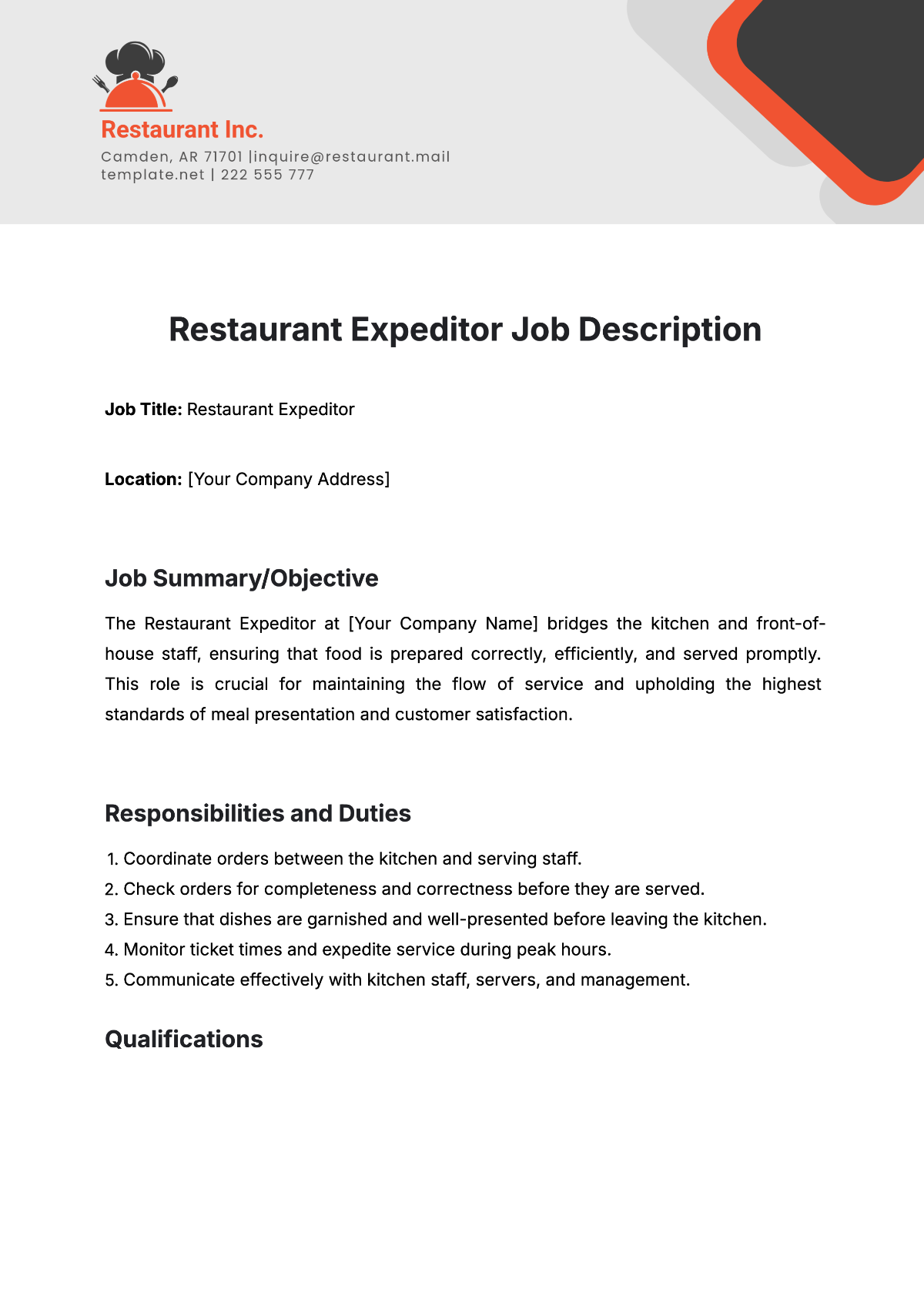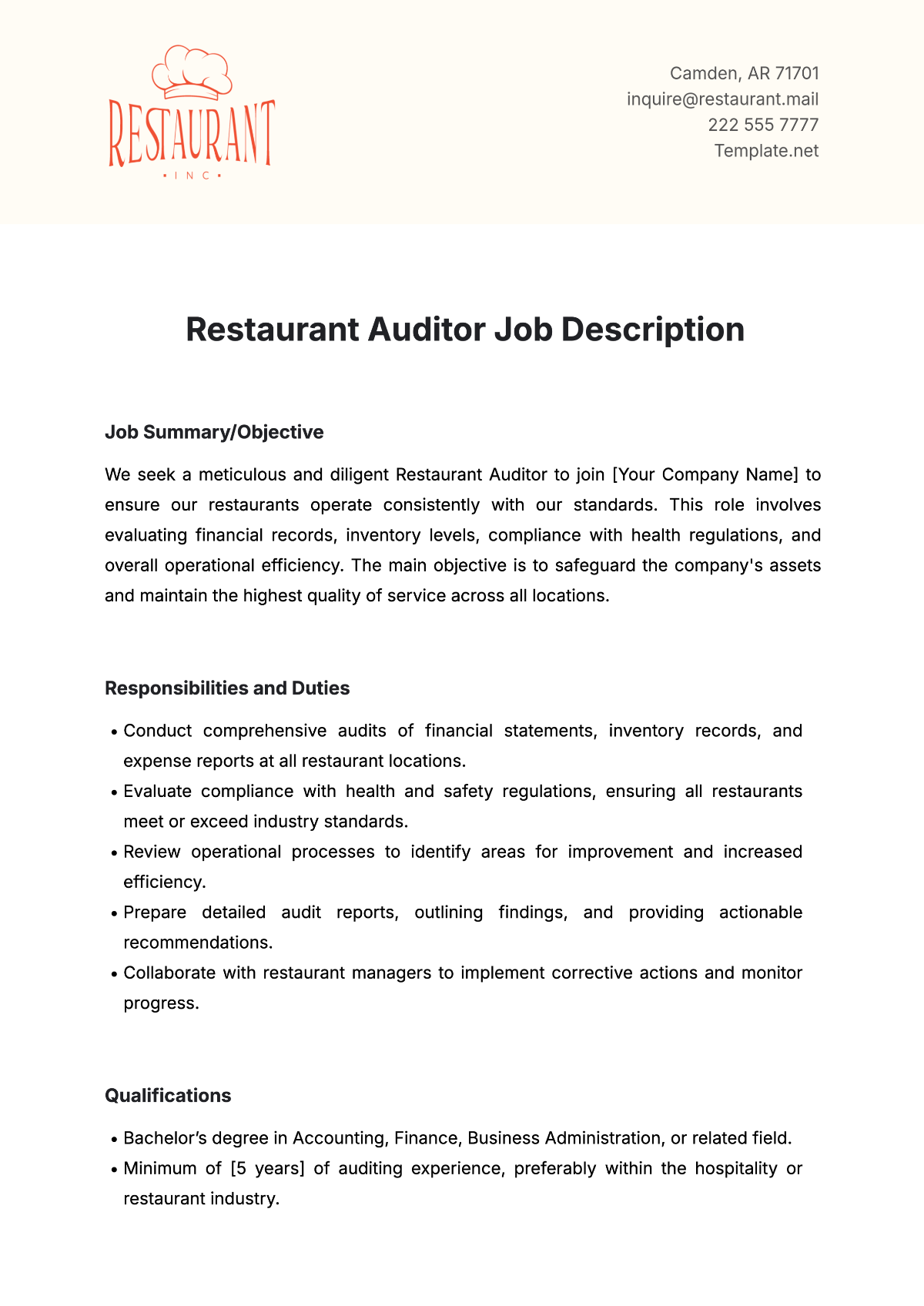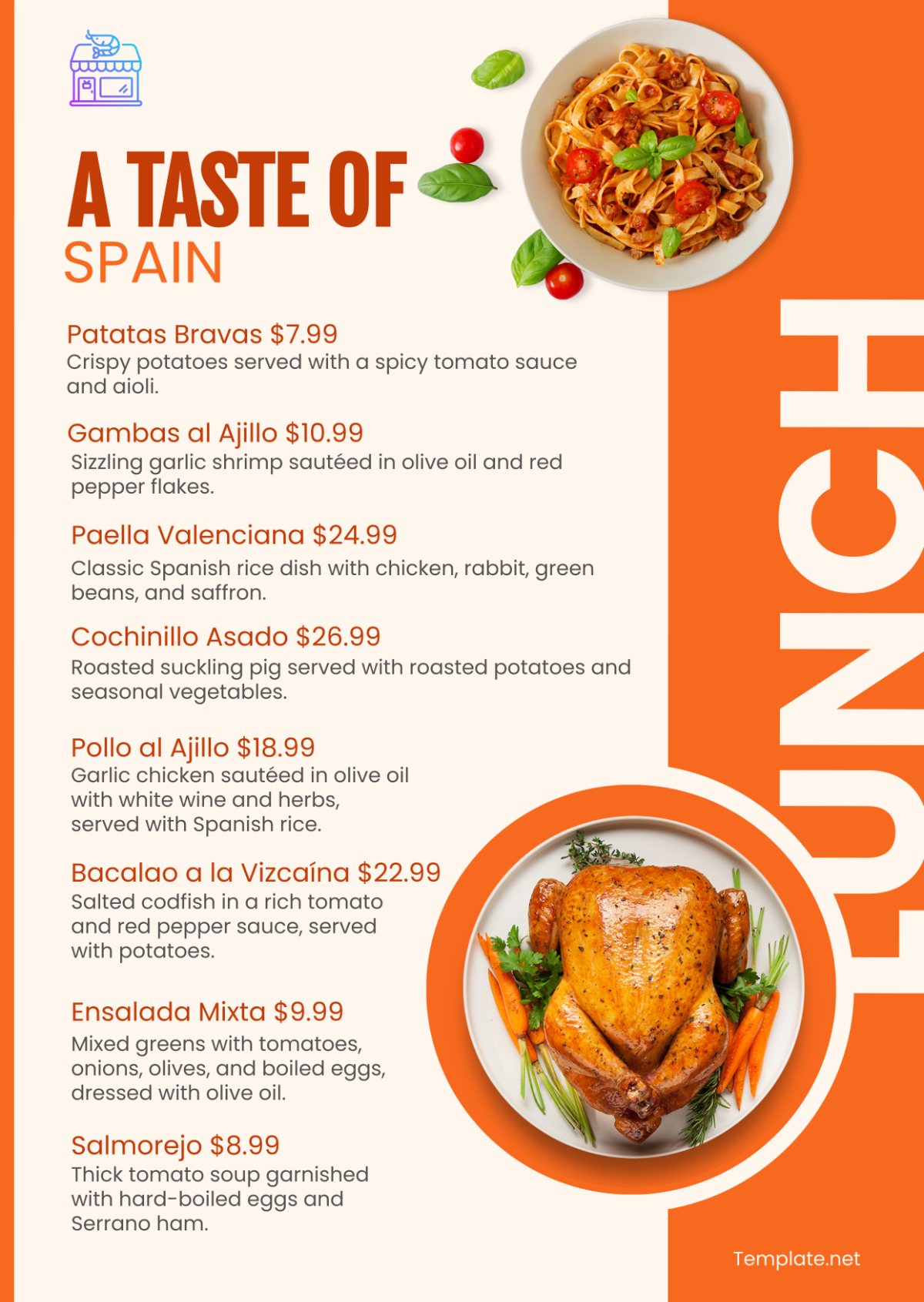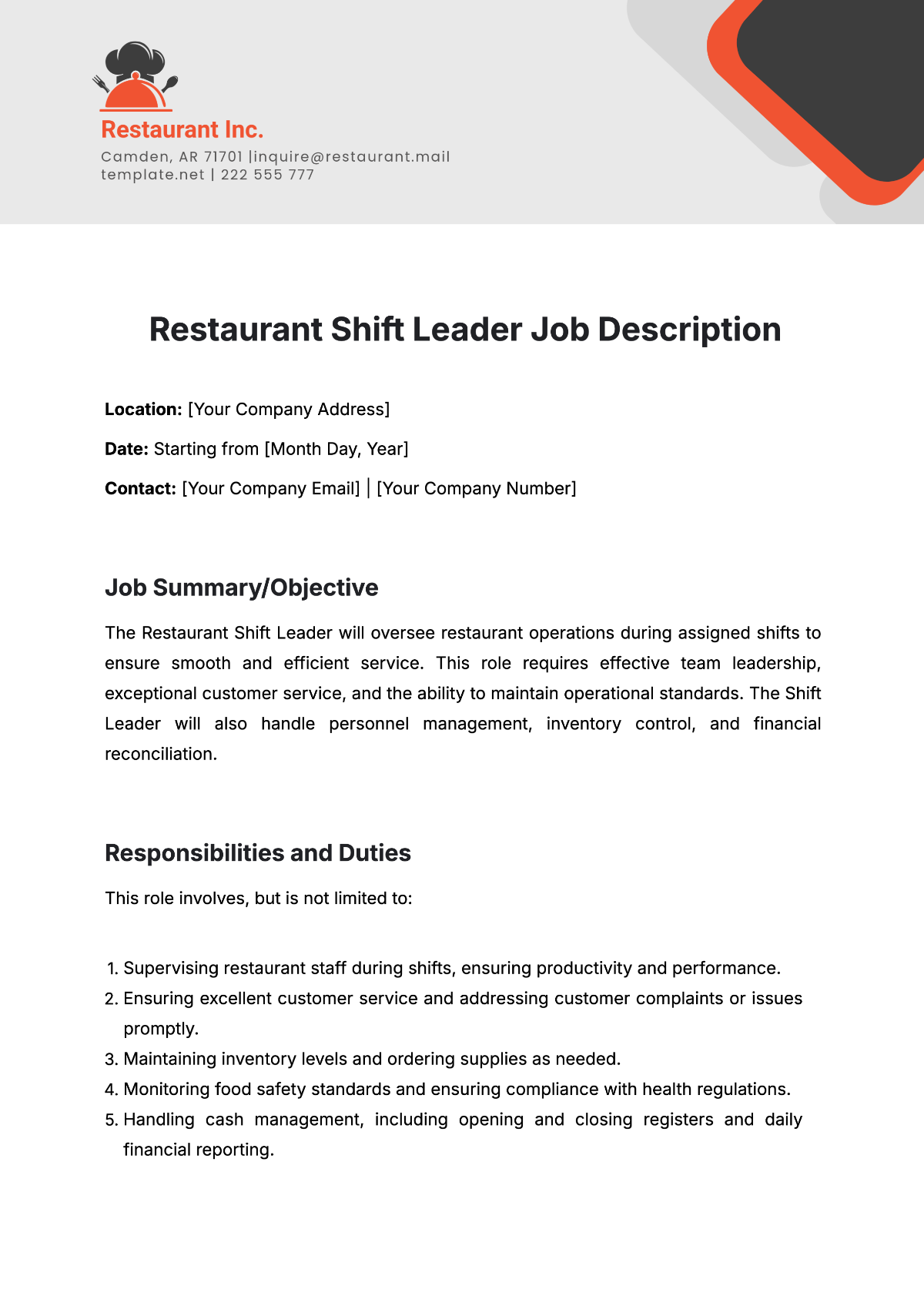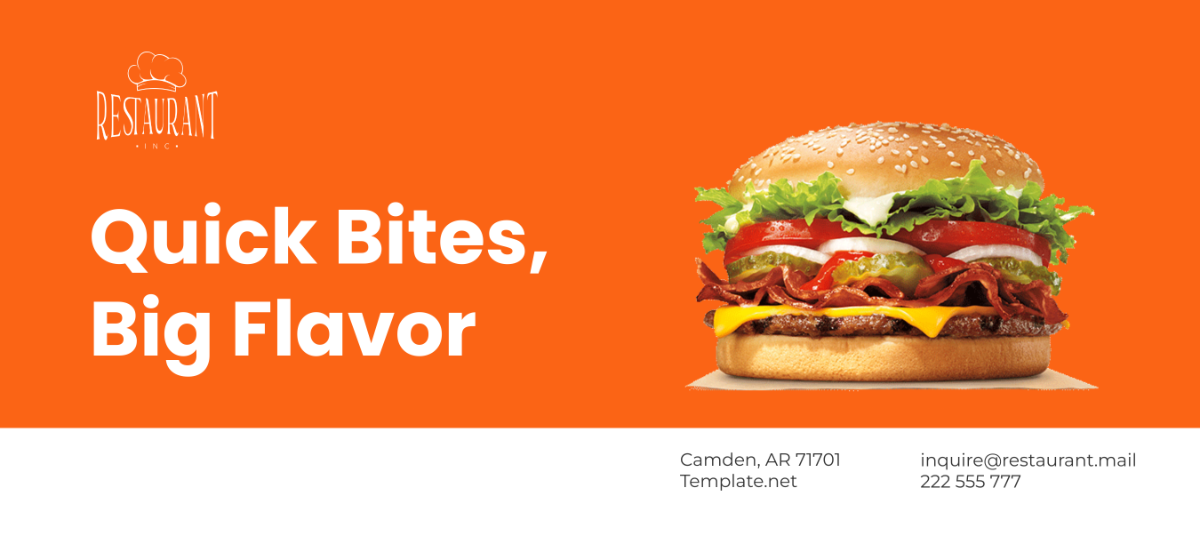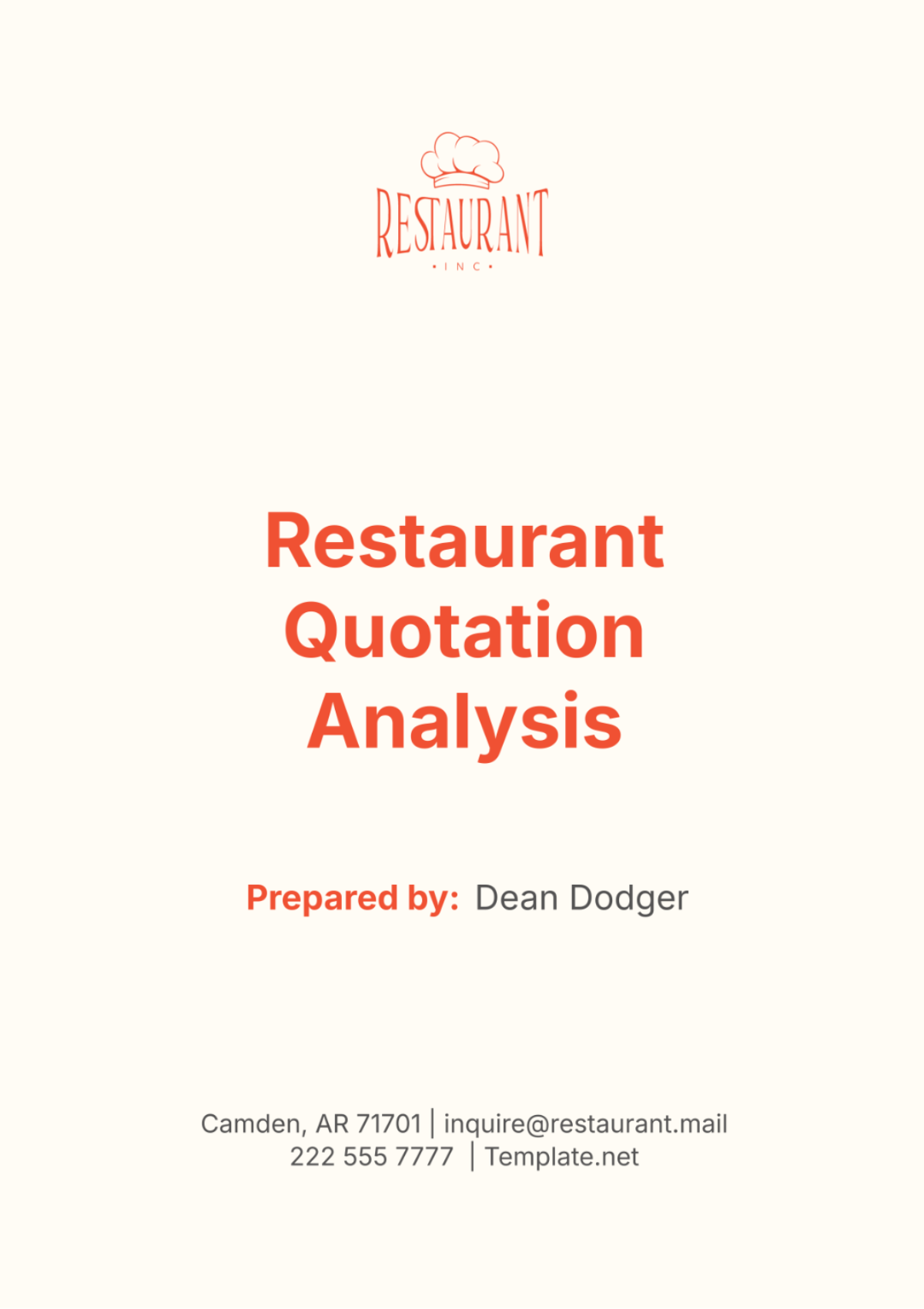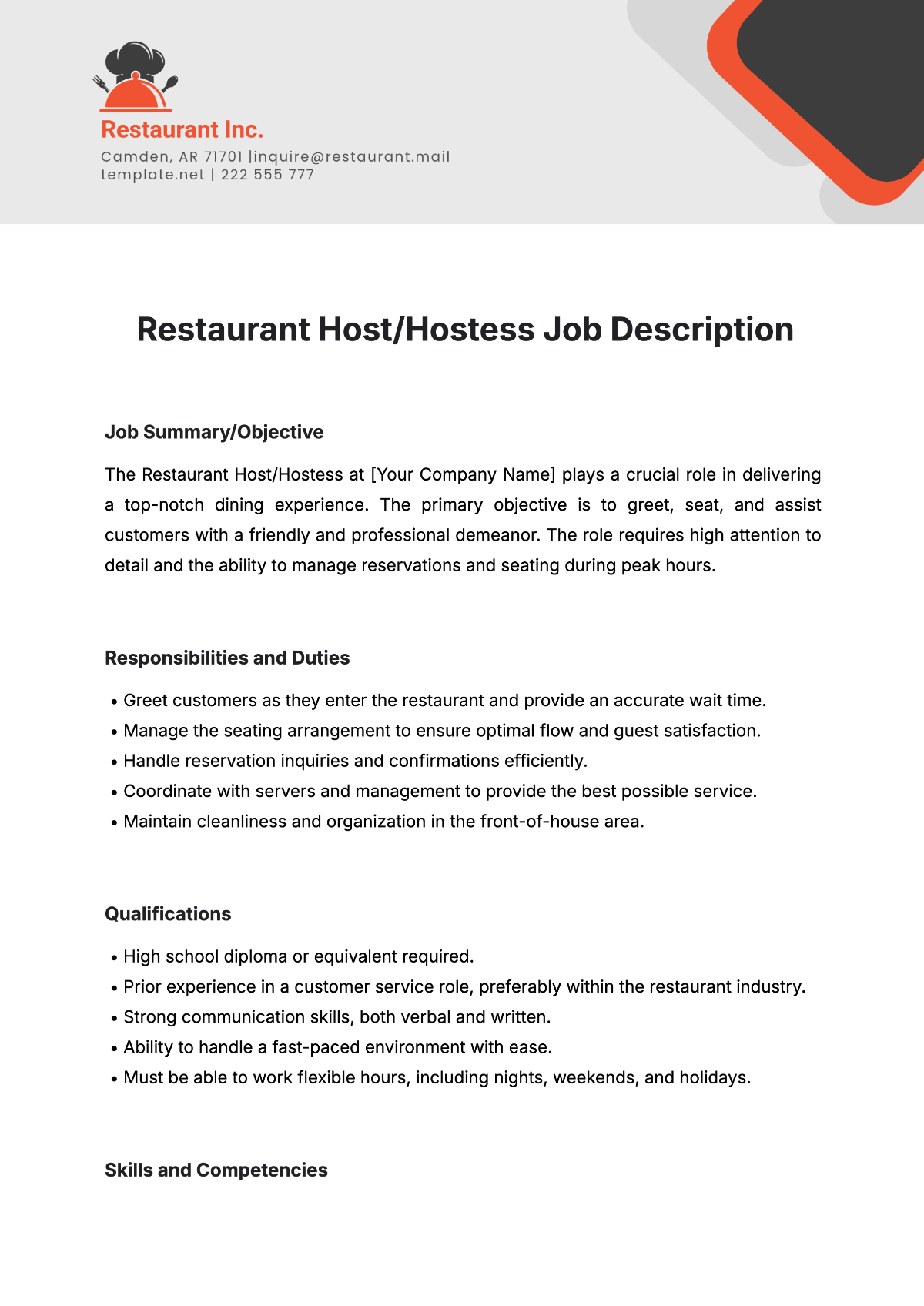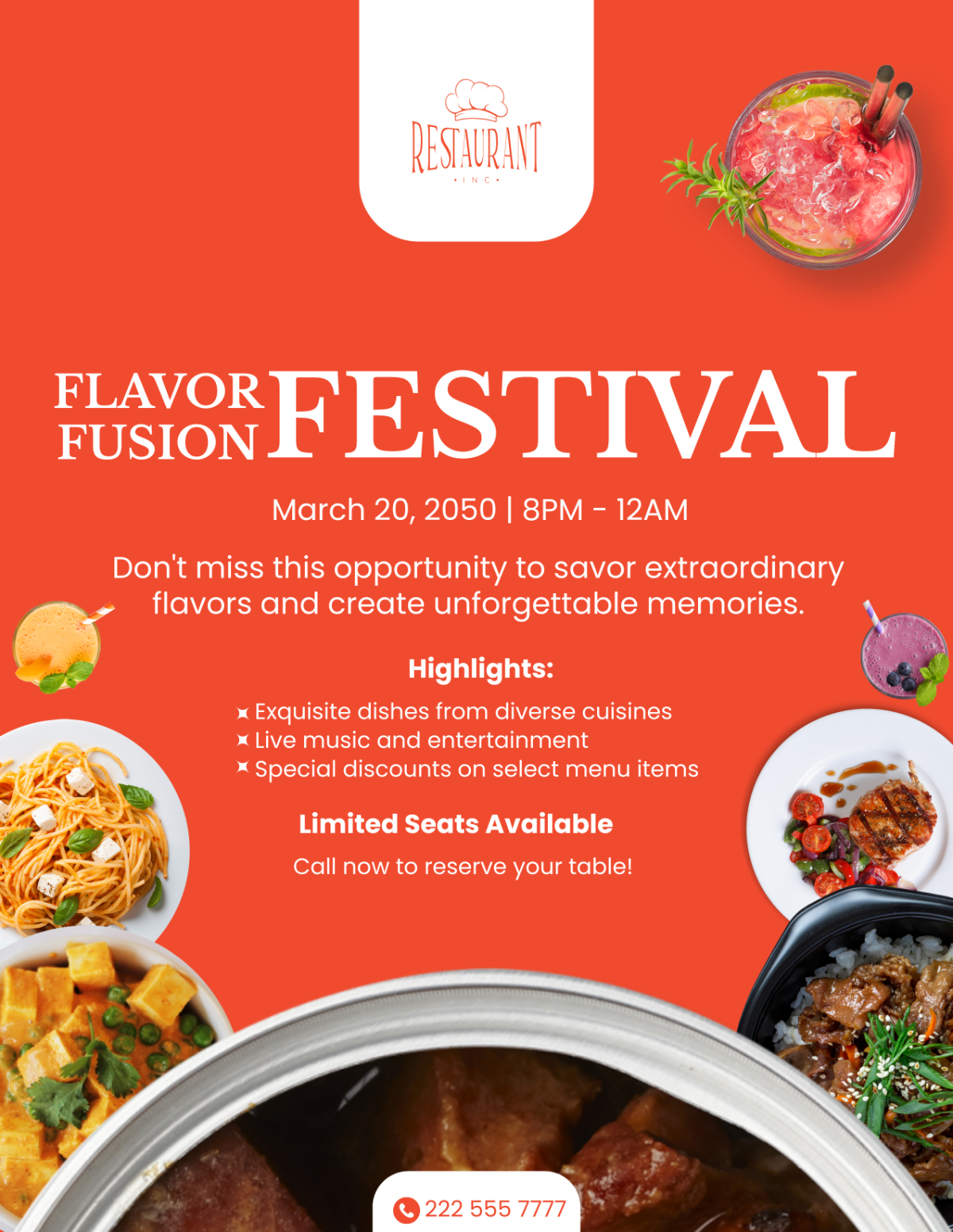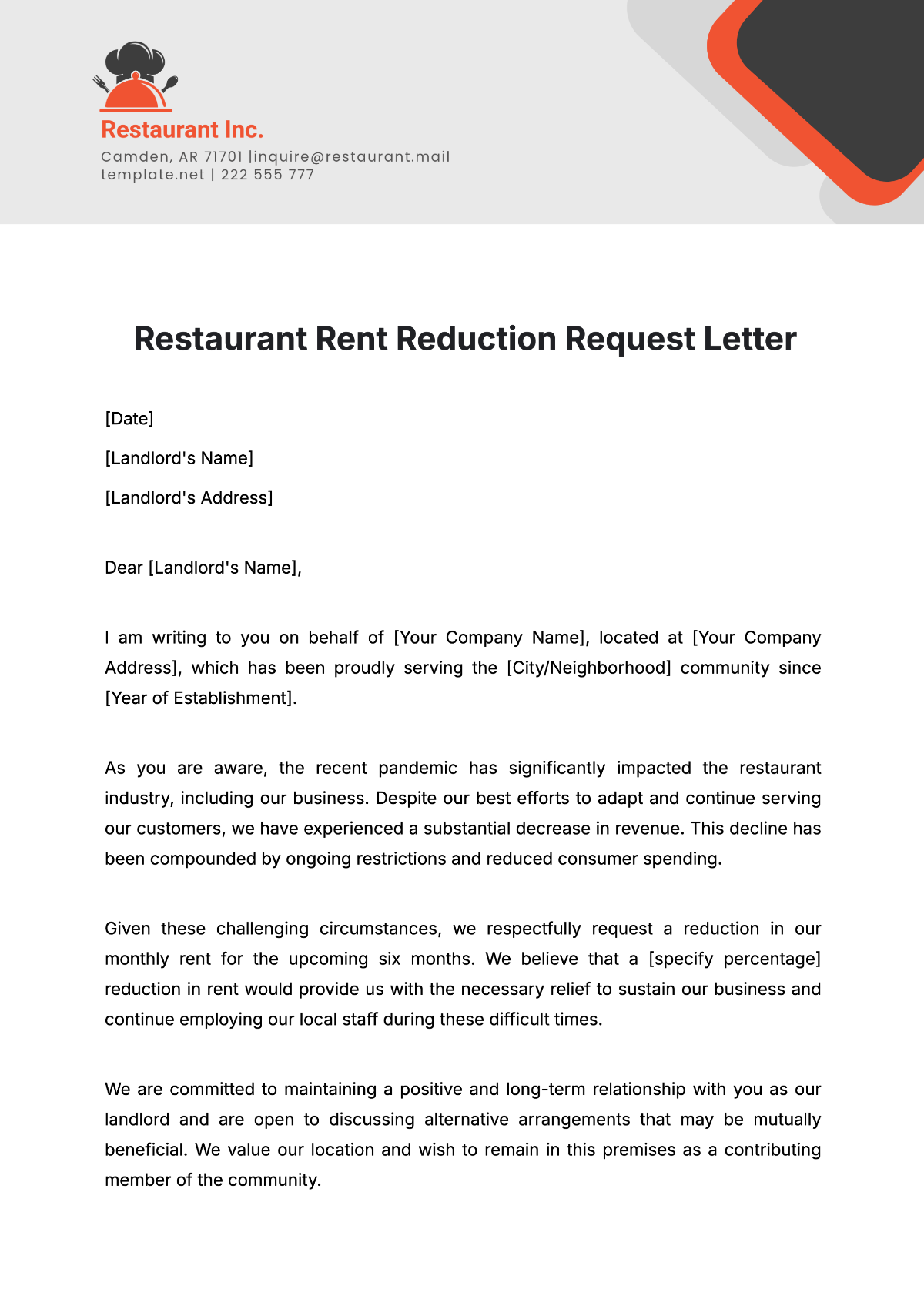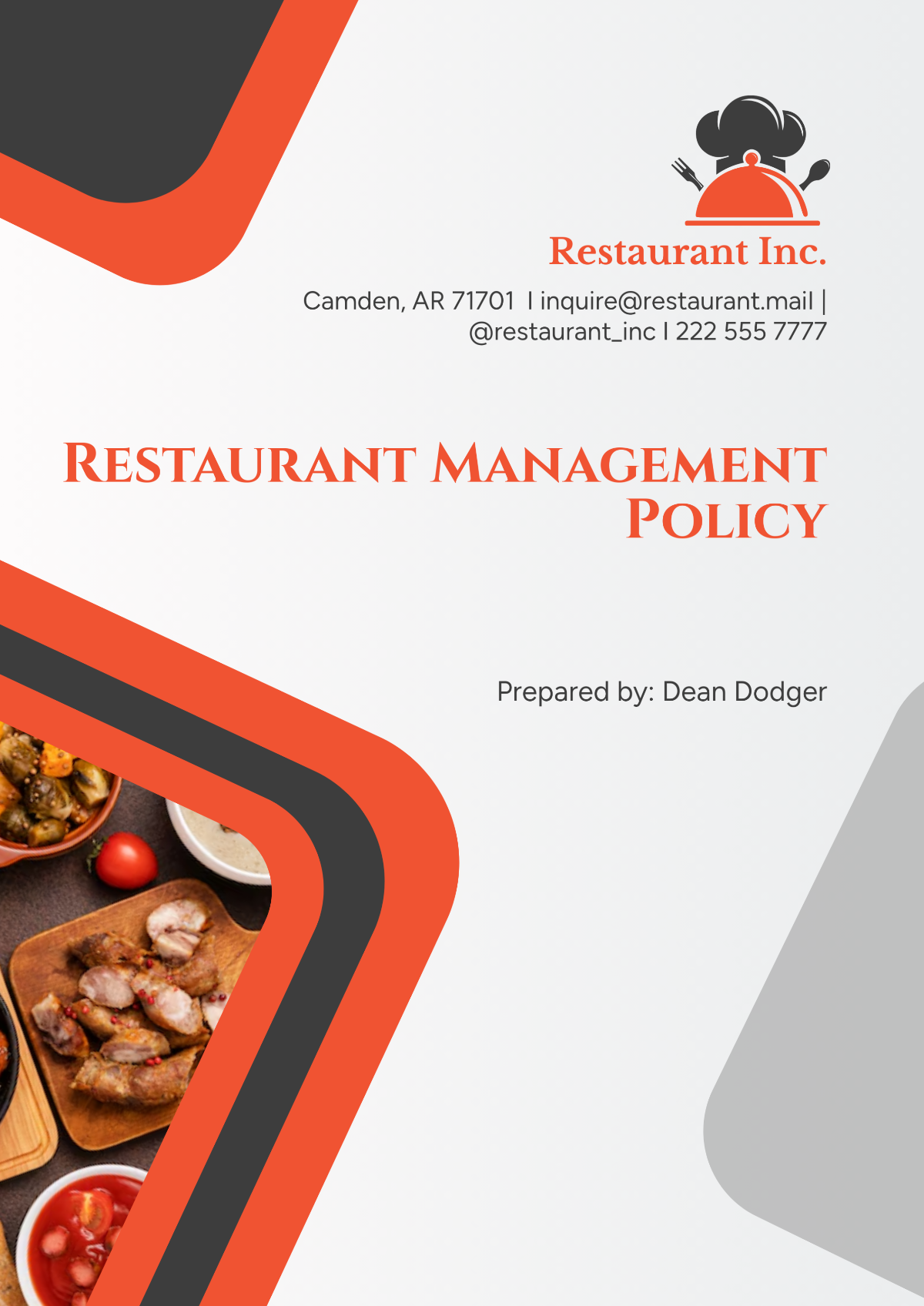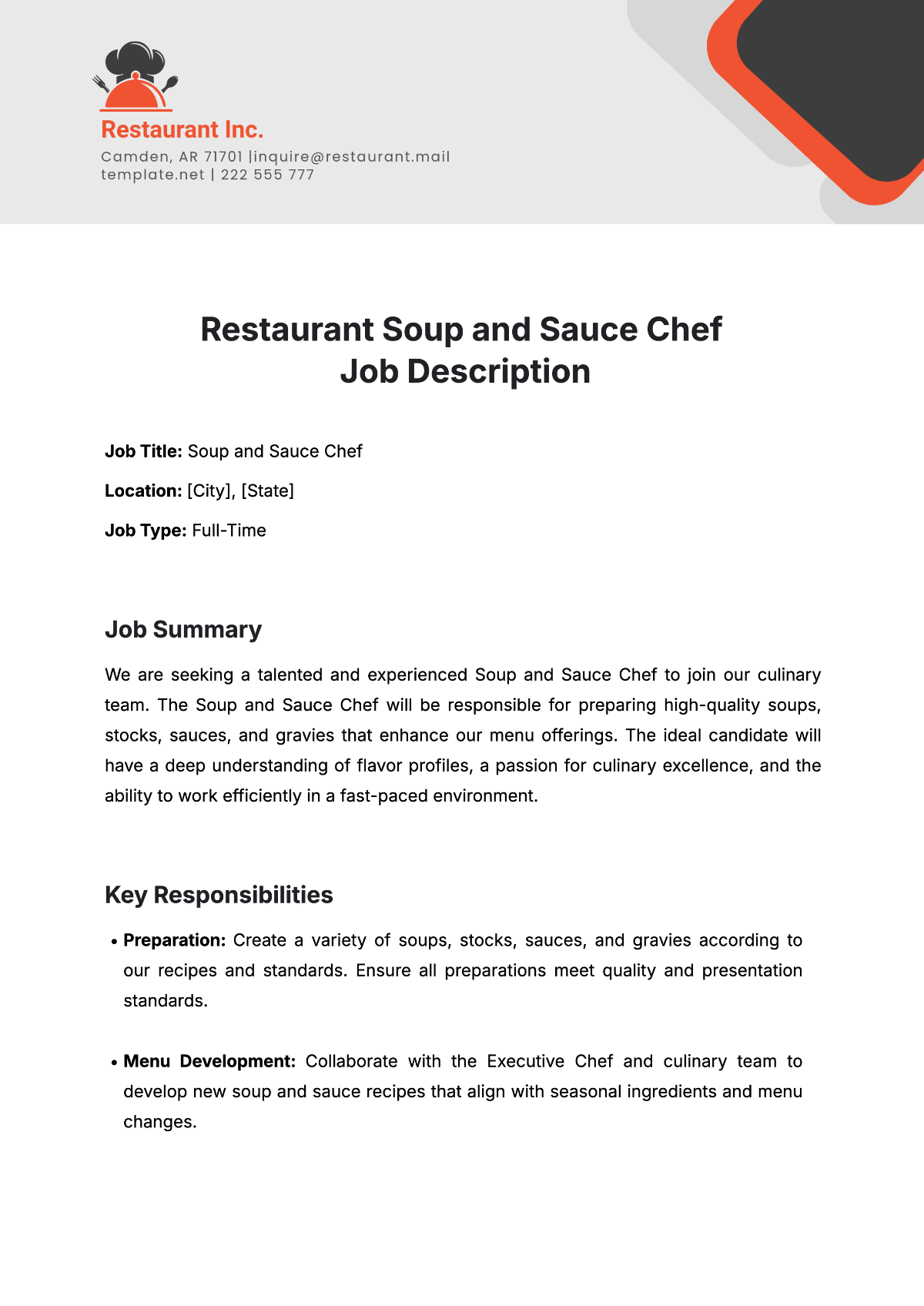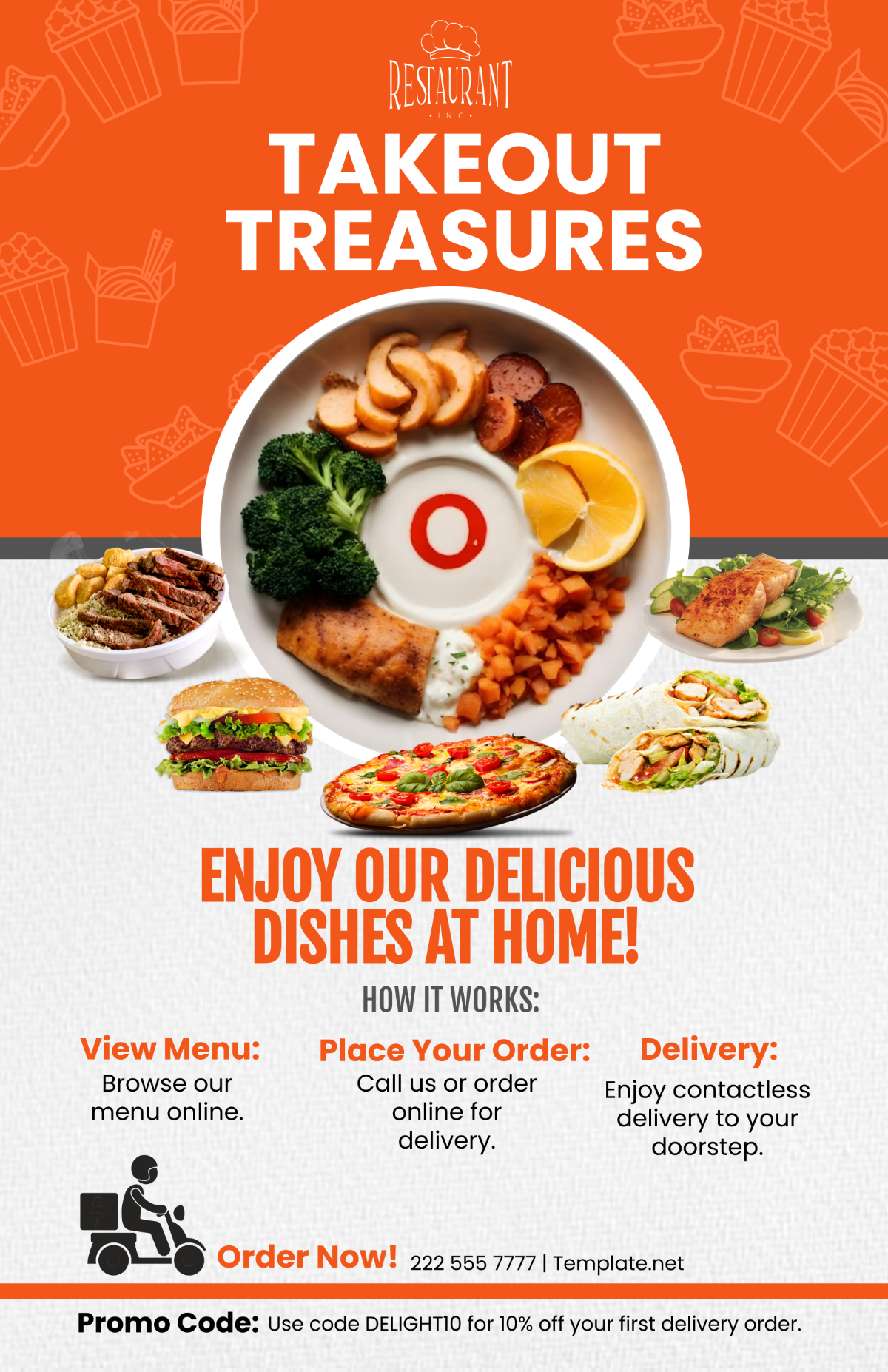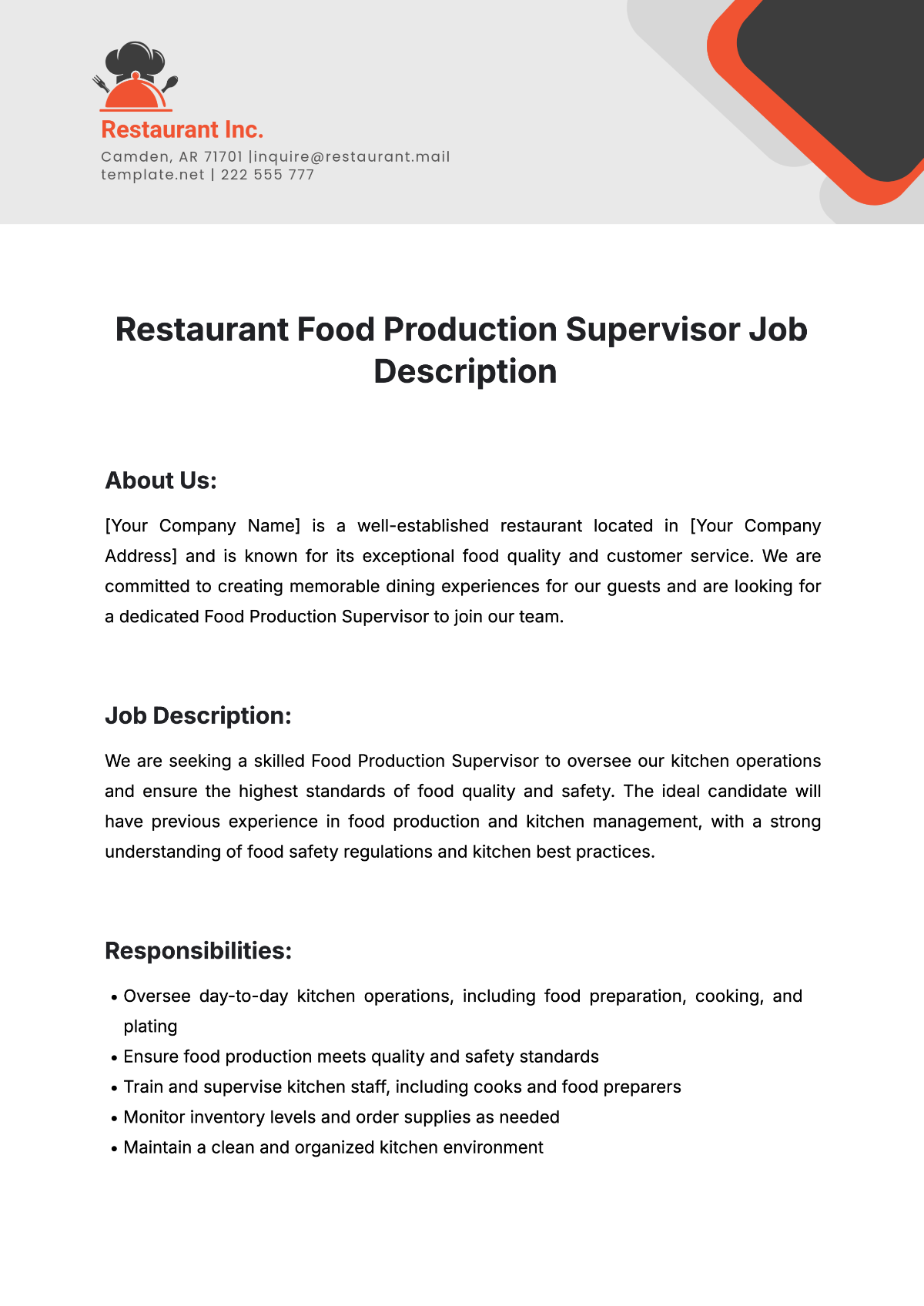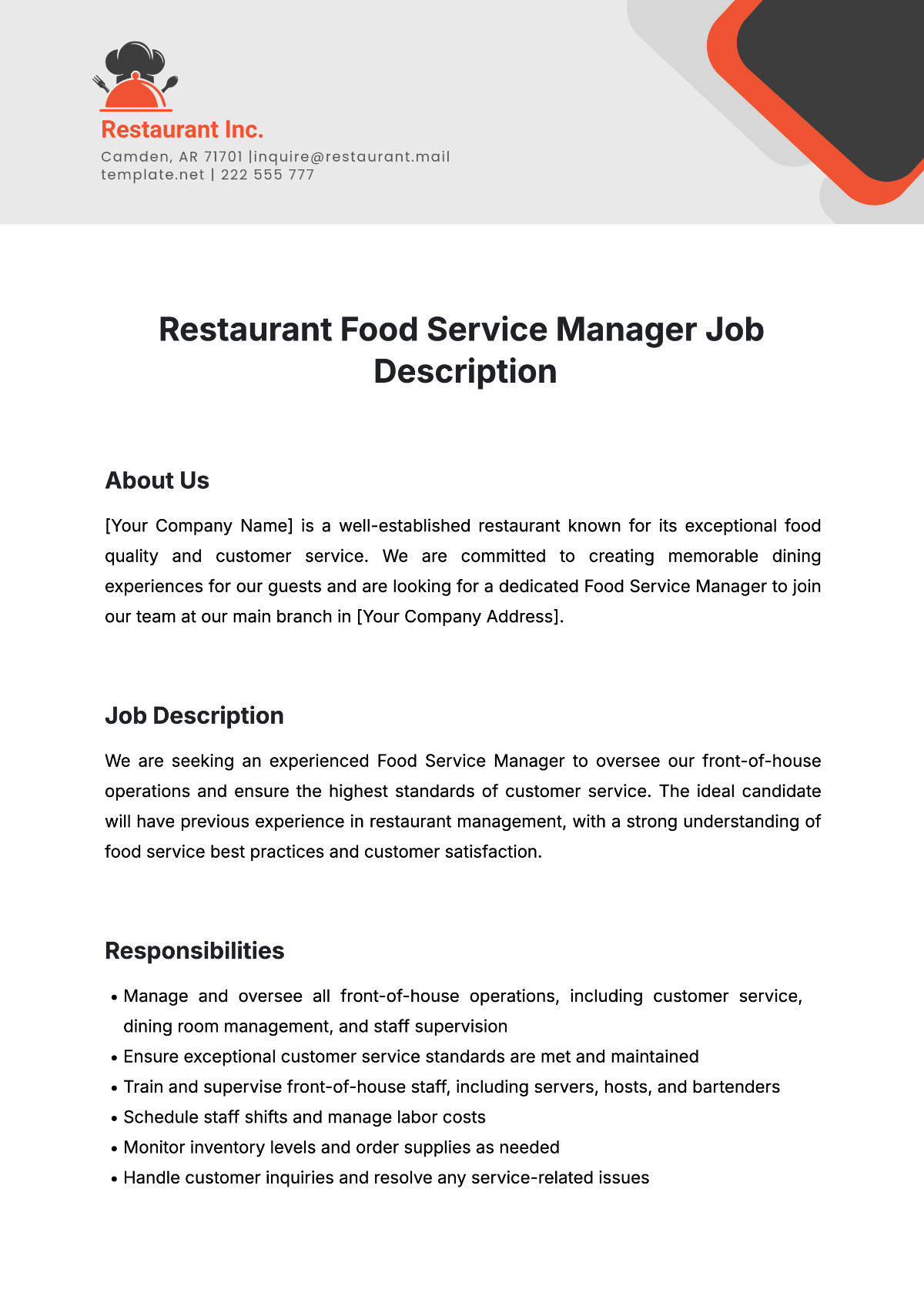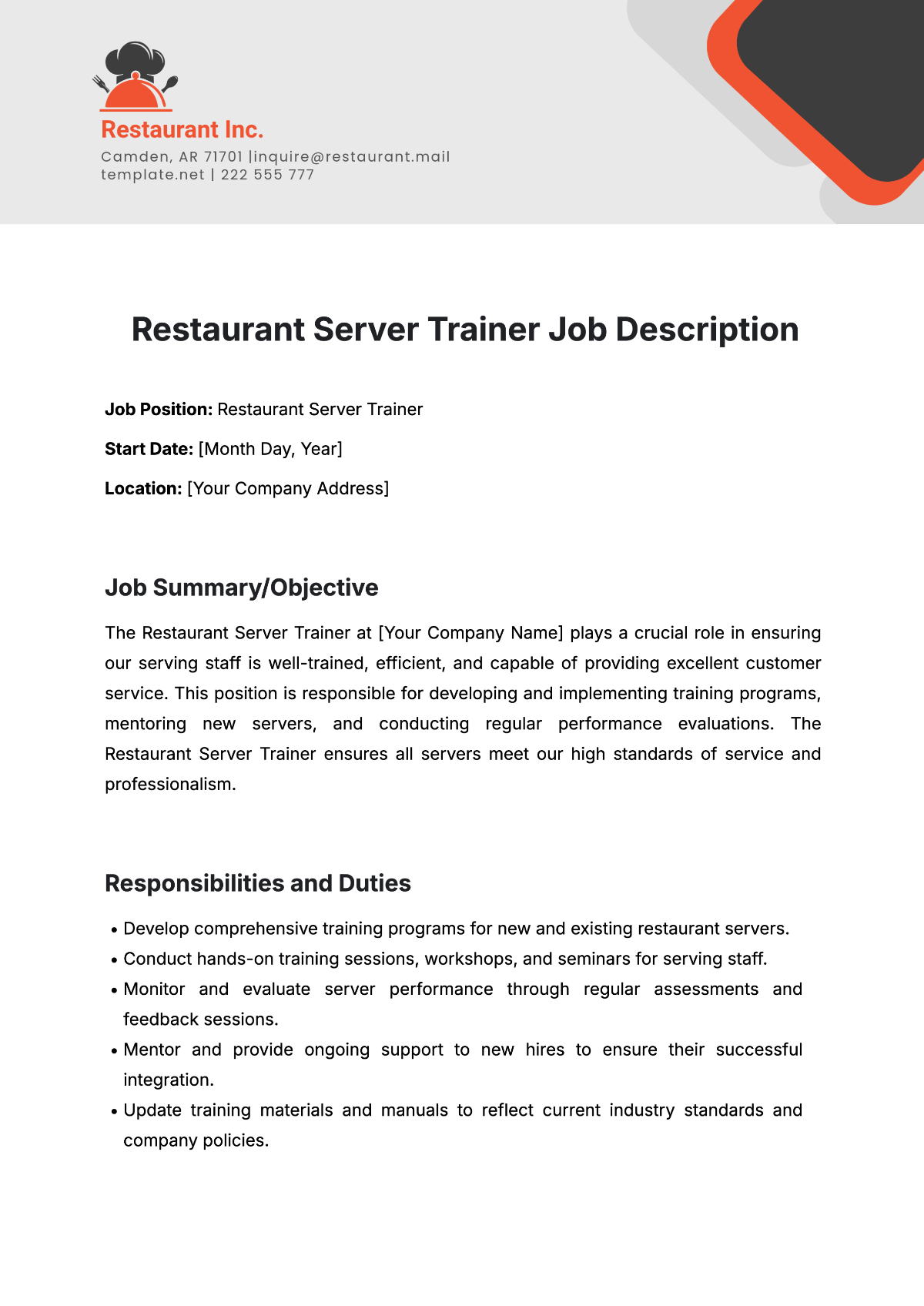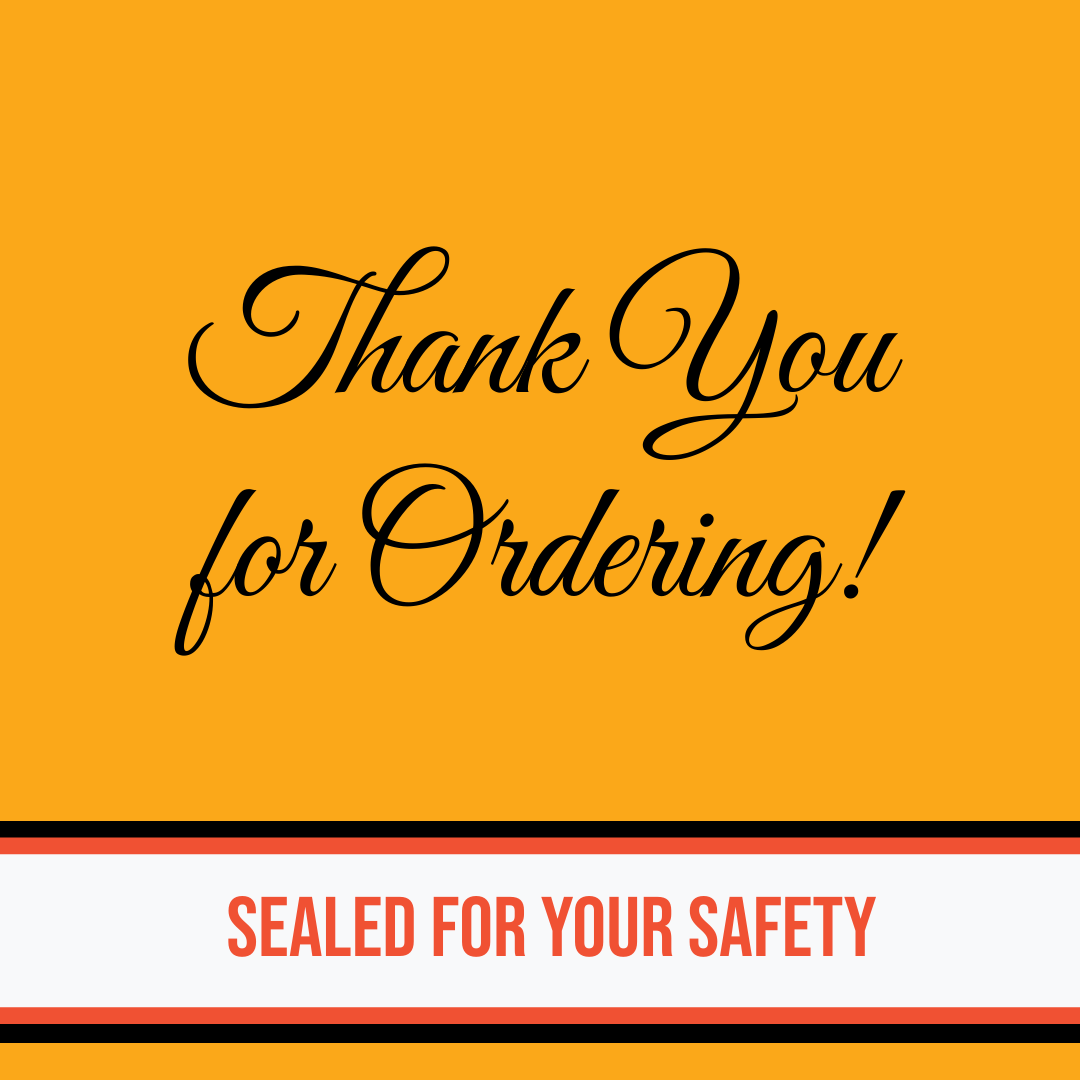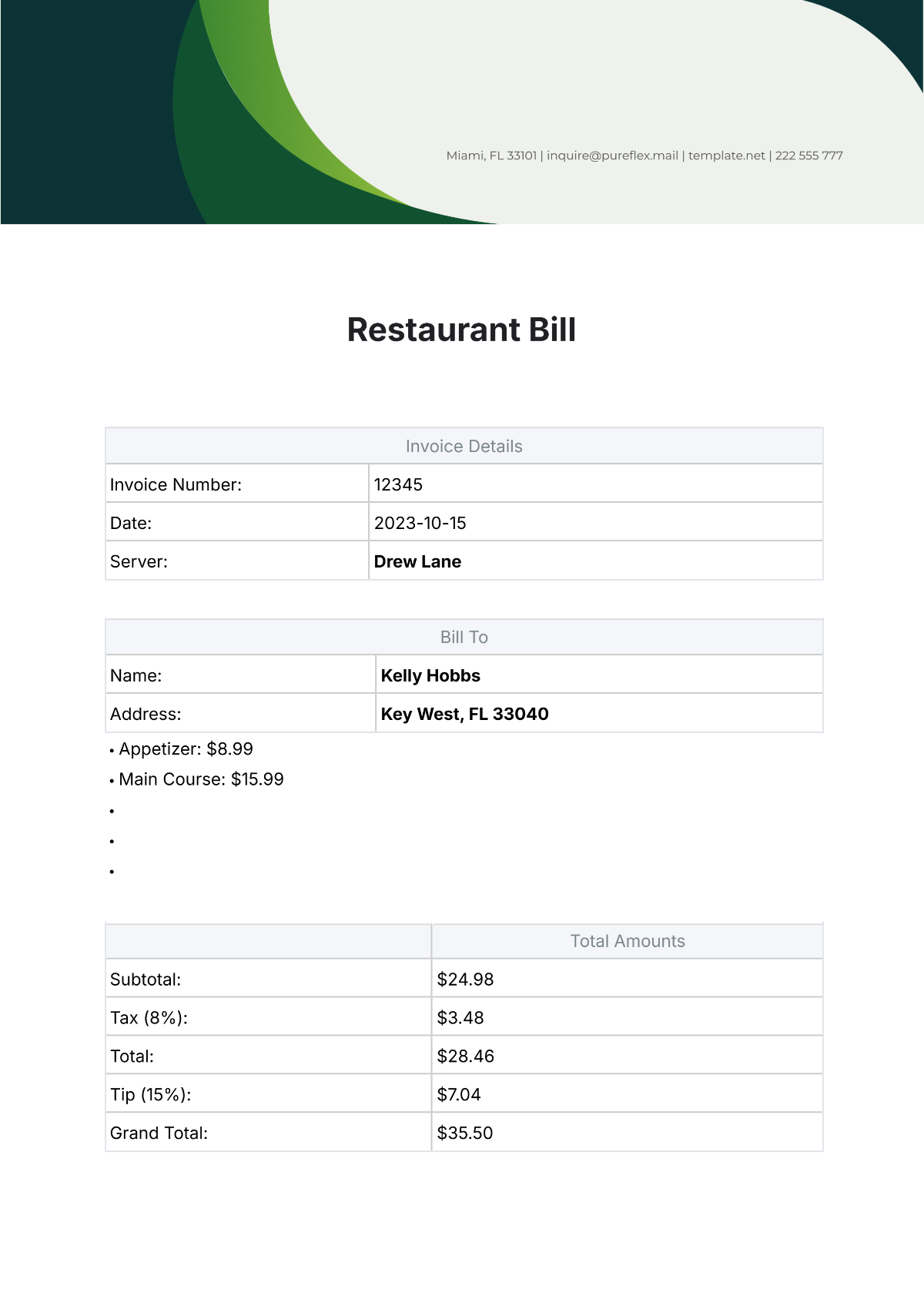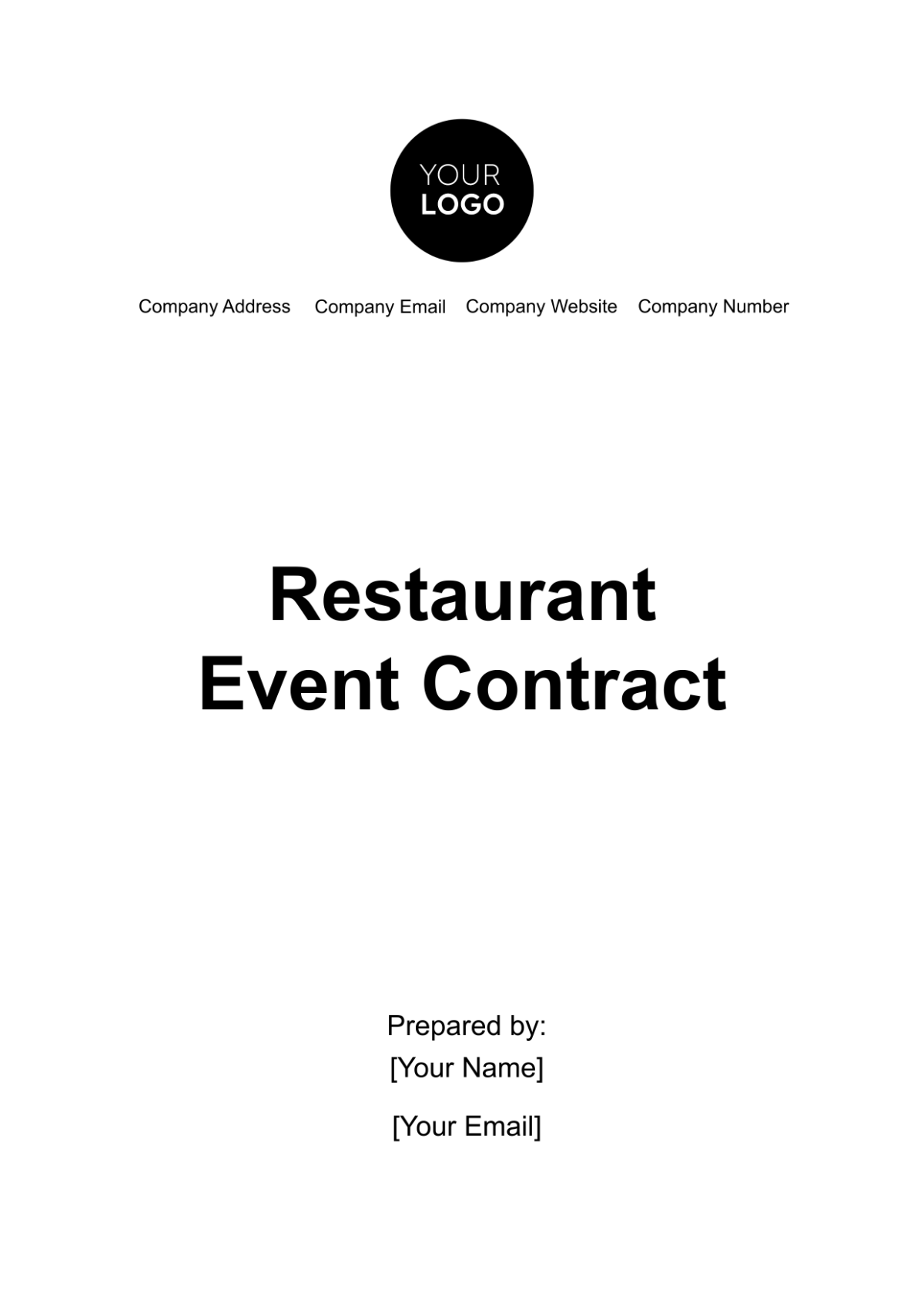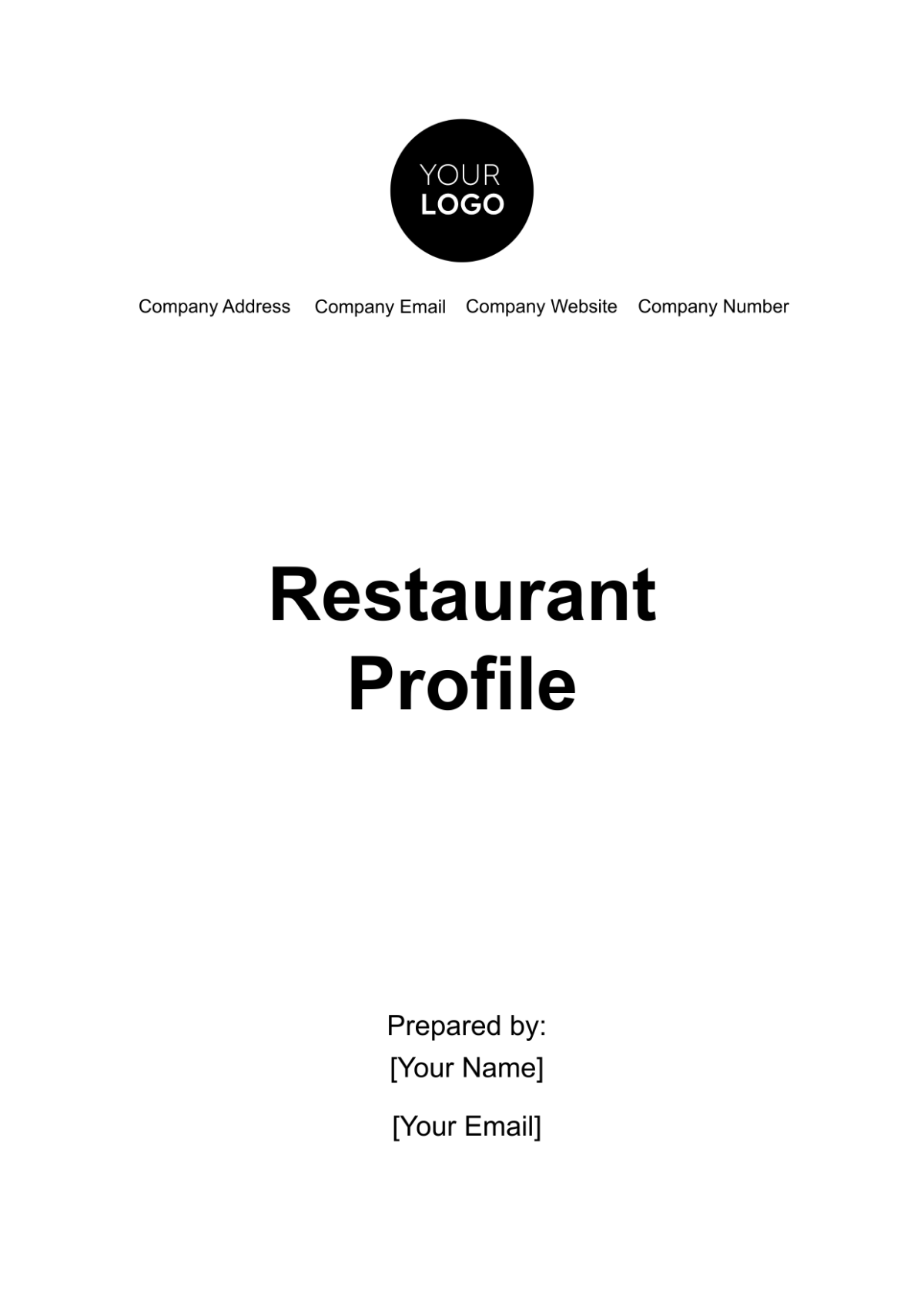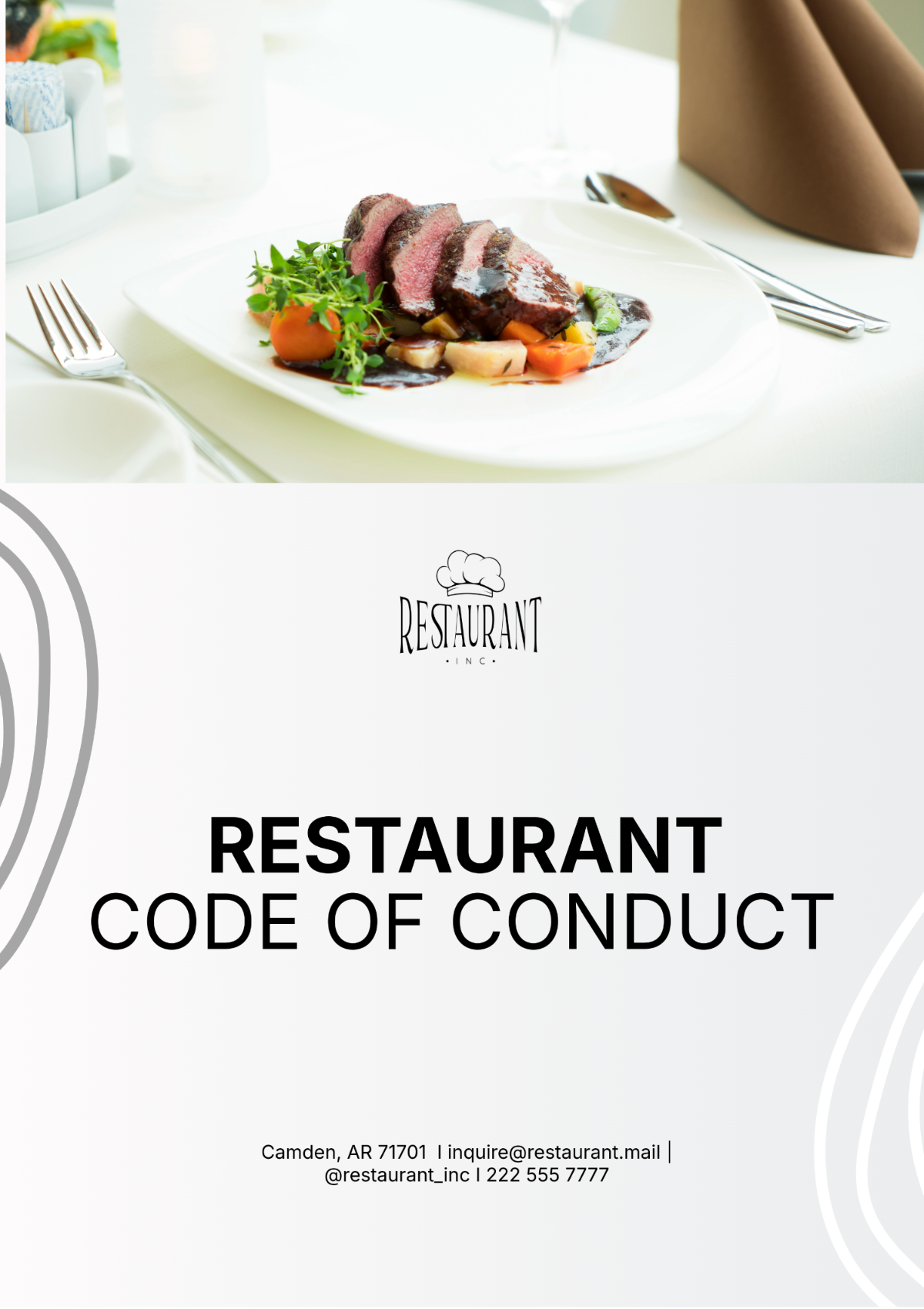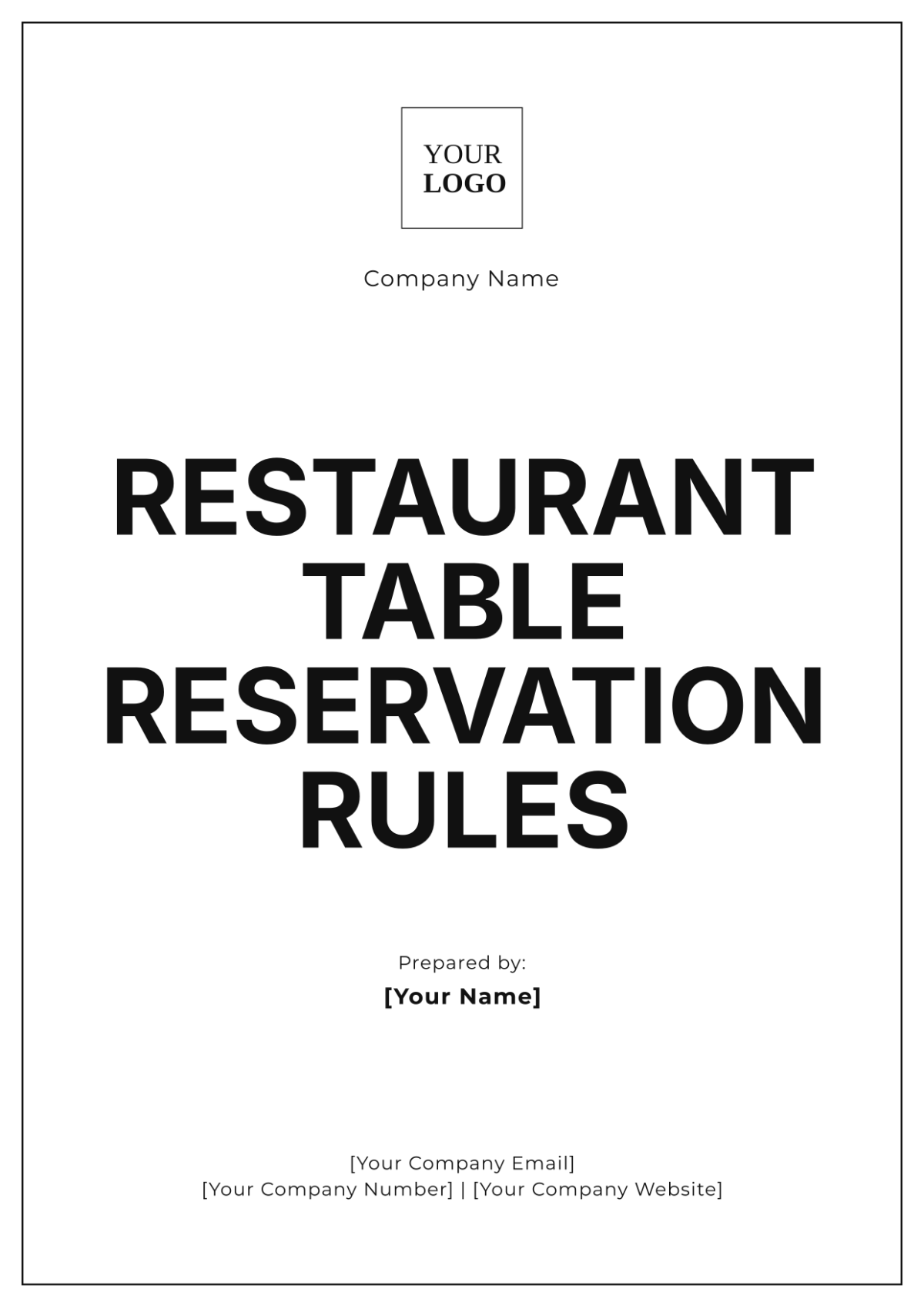I. Introduction
A. Purpose
The purpose of this guide is to provide comprehensive instructions for placing and managing restaurant orders at [Your Company Name]. This guide aims to ensure consistency, accuracy, and efficiency in the ordering process, ultimately enhancing the overall dining experience for our customers. By following these procedures, staff will be able to deliver high-quality service, minimize errors, and address customer needs promptly.
B. Scope
This guide covers all aspects of the ordering process, including menu selection, order placement, payment processing, and order fulfillment. It is intended for use by restaurant staff, managers, and customers. Detailed instructions are provided for each step, ensuring that everyone involved in the process can understand and follow the procedures effectively. This guide also includes protocols for handling customer feedback and complaints, helping to maintain a high level of customer satisfaction.
II. Menu Selection
A. Overview
[Your Company Name] offers a diverse menu featuring a wide range of appetizers, main courses, desserts, and beverages. This section provides detailed descriptions of the menu items and their respective categories. Our menu is designed to cater to various tastes and dietary preferences, ensuring that every customer can find something they enjoy. Each item on the menu is carefully crafted using high-quality ingredients to provide a memorable dining experience.
B. Appetizers
Sample Appetizer 1:
Description: A savory dish with a blend of spices and herbs, perfect for starting your meal. This appetizer is crafted to tantalize your taste buds with its unique flavor profile.
Ingredients: Our savory appetizer includes fresh herbs, spices, and locally sourced ingredients to ensure optimal flavor and quality.
Price: [$0.00]
Sample Appetizer 2:
Description: A light and crispy starter with a tangy dipping sauce, ideal for those who prefer a refreshing beginning to their meal. This dish combines textures and flavors to create a delightful experience.
Ingredients: Our crispy appetizer is made with a light batter, fresh ingredients, and a zesty dipping sauce for an unforgettable taste experience.
Price: [$0.00]
C. Main Courses
Sample Main Course 1:
Description: A hearty entrée featuring a protein-rich main ingredient, served with sides. This dish is designed to be a fulfilling and satisfying main course, perfect for a complete meal.
Ingredients: Our hearty main course includes premium proteins, fresh vegetables, and flavorful sauces to create a dish that satisfies even the heartiest appetites.
Price: [$0.00]
Sample Main Course 2:
Description: A vegetarian option with a mix of fresh vegetables and grains, offering a nutritious and delicious meal for those who prefer plant-based options.
Ingredients: Our vegetarian main course features a colorful array of seasonal vegetables, hearty grains, and aromatic spices for a satisfying dining experience.
Price: [$0.00]
D. Desserts
Sample Dessert 1:
Description: A sweet treat made with rich, creamy ingredients, ideal for concluding your meal on a high note. This dessert is crafted to provide a luxurious and indulgent experience.
Ingredients: Our indulgent dessert is made with premium chocolate, fresh cream, and other luxurious ingredients for a truly unforgettable taste experience.
Price: [$0.00]
Sample Dessert 2:
Description: A light dessert option with a fruity flavor profile, perfect for those who prefer a refreshing and less heavy sweet option.
Ingredients: Our fruity dessert is made with fresh fruit, natural sweeteners, and a hint of citrus for a delightful and guilt-free indulgence.
Price: [$0.00]
E. Beverages
Sample Beverage 1:
Description: A refreshing non-alcoholic drink, ideal for pairing with any meal. This beverage is designed to quench your thirst and complement the flavors of your food.
Ingredients: Our refreshing beverage is made with natural fruit flavors, sparkling water, and a touch of sweetness for a refreshing and hydrating experience.
Price: [$0.00]
Sample Beverage 2:
Description: An alcoholic beverage with a robust flavor, perfect for those who enjoy a stronger drink with their meal. This beverage is crafted to provide a balanced and enjoyable drinking experience.
Ingredients: Our alcoholic beverage is made with premium spirits, fresh mixers, and hand-selected ingredients for a sophisticated and enjoyable drinking experience.
Price: [$0.00]
III. Order Placement
A. In-House Orders
Step 1: Greet the Customer
Welcome the customer warmly as they enter the restaurant and provide them with menus. A friendly and professional greeting sets a positive tone for the dining experience.
Offer assistance with the menu if needed, highlighting specials or new items.
Step 2: Take the Order
Record the customer's selections accurately, including any special requests or dietary restrictions. It is important to listen carefully and ask clarifying questions to ensure accuracy.
Confirm the order details with the customer to avoid any misunderstandings.
Step 3: Enter the Order
Input the order into the restaurant's point-of-sale (POS) system, ensuring all details are correct. This step is crucial for the kitchen to prepare the order correctly and efficiently.
Double-check the order for accuracy before submitting it to the kitchen to prevent errors and ensure customer satisfaction.
B. Online Orders
Step 1: Access the Online Platform
Customers can visit [Your Company Website] or use the mobile app to place their orders. The online platform should be user-friendly and easy to navigate.
Ensure that the menu is up-to-date and all items are clearly listed with descriptions and prices.
Step 2: Select Items
Browse the menu and select desired items, including any customizations or special requests. The platform should allow for easy modification and clear indication of any additional charges.
Customers should be able to review their selections before proceeding.
Step 3: Review and Confirm
Review the order summary to ensure all items and customizations are correct. The platform should provide a clear and detailed summary of the order.
Confirm the order and proceed to payment, ensuring that the payment process is secure and straightforward.
C. Phone Orders
Step 1: Answer the Call
Answer promptly and courteously, introducing the restaurant and asking how you can assist. A friendly and professional tone is important to create a positive impression.
Ensure that you have a notepad or order form ready to take down the details.
Step 2: Take the Order
Record the customer's order, ensuring clarity on each item and any modifications. It is important to repeat the order back to the customer to confirm accuracy.
Ask for any additional details, such as special instructions or delivery preferences.
Step 3: Enter the Order
Input the order into the POS system as if it were an in-house order. This ensures that the kitchen receives the order in the same format and can prepare it accordingly.
Double-check the order details to ensure there are no mistakes.
IV. Payment Processing
A. In-House Payments
Cash Payments
Accept cash, provide change, and issue a receipt. It is important to handle cash transactions accurately and securely.
Ensure that the cash register is balanced at the end of each shift.
Credit/Debit Card Payments
Swipe or insert the card, follow the prompts on the terminal, and obtain the customer's signature if required. Ensure that the transaction is processed securely.
Provide a receipt and thank the customer for their payment.
B. Online Payments
Credit/Debit Card Payments
Enter card details securely through the online platform. The platform should be PCI-compliant to protect customer data.
Confirm the payment and provide an electronic receipt to the customer.
Digital Wallets
Accept payments via digital wallets like PayPal or Apple Pay. These options provide convenience for customers and secure transactions.
Ensure that the digital wallet integration is functioning correctly and securely.
C. Phone Payments
Credit/Debit Card Payments
Collect card information over the phone and process through the POS system. Ensure that the information is entered accurately and securely.
Provide a receipt and confirm the payment with the customer, thanking them for their business.
V. Order Fulfillment
A. Kitchen Preparation
Receive Order
The kitchen receives the order details from the POS system. It is important that the orders are clear and easy to read.
Confirm receipt of the order and begin preparation promptly.
Prepare Order
Follow standardized recipes and preparation methods to ensure consistency. This helps maintain the quality and taste of the dishes.
Pay attention to any special requests or dietary restrictions indicated on the order.
Quality Check
Conduct a final check to ensure the order meets quality standards. This includes verifying the appearance, temperature, and portion sizes of the dishes.
Ensure that any special requests have been fulfilled accurately.
B. Order Packaging
Packaging Materials
Use appropriate packaging materials to maintain food temperature and presentation. The packaging should be sturdy and designed to keep the food fresh and intact.
Ensure that hot and cold items are packaged separately to maintain optimal temperatures.
Labeling
Label the order with the customer’s name and order details to avoid confusion. Clear labeling helps ensure that customers receive the correct items.
Include any necessary condiments, utensils, and napkins with the order.
C. Delivery
In-House Delivery
Serve the order directly to the customer’s table, ensuring that all items are correct and presented well. A courteous and prompt delivery enhances the dining experience.
Check back with the customer to ensure they have everything they need.
Takeout and Curbside Pickup
Prepare the order for pickup, ensuring it is ready at the designated time. Timely preparation helps avoid delays and customer dissatisfaction.
Provide clear instructions for curbside pickup to make the process smooth and efficient.
Third-Party Delivery Services
Coordinate with delivery partners to ensure timely and accurate delivery. Maintain good communication with delivery drivers to avoid any issues.
Monitor the quality and timeliness of deliveries to ensure customer satisfaction.
VI. Customer Feedback and Issue Resolution
A. Collecting Feedback
In-House Feedback
Encourage customers to provide feedback on their dining experience. Staff should be attentive and responsive to customer comments and suggestions.
Provide feedback forms or direct customers to an online survey.
Online Reviews
Monitor and respond to reviews on platforms like Yelp and Google. Engaging with reviews shows that the restaurant values customer feedback.
Address both positive and negative reviews professionally and constructively.
B. Handling Complaints
In-House Complaints
Address complaints promptly and courteously, offering solutions such as replacements or refunds. It is important to listen to the customer and understand their concerns.
Document the complaint and follow up to ensure the issue is resolved satisfactorily.
Online and Phone Complaints
Respond to complaints through the respective channels, ensuring customer satisfaction. Apologize for any inconvenience and provide a clear plan for resolution.
Follow up with the customer to confirm that their issue has been resolved and that they are satisfied with the outcome.
VII. Data and Analytics
A. Order Tracking
Sales Data
Track sales data to identify popular items and peak ordering times. Analyzing this data helps in menu planning and inventory management.
Use sales reports to understand trends and make informed business decisions.
Customer Preferences
Analyze customer preferences to refine menu offerings. Understanding what customers like and dislike helps tailor the menu to meet their needs.
Implement changes based on data to improve customer satisfaction and increase sales.
B. Performance Metrics
Order Accuracy
Measure order accuracy rates and implement training to reduce errors. Ensuring orders are correct is crucial for maintaining customer satisfaction.
Regularly review performance and provide feedback to staff.
Delivery Times
Monitor delivery times to ensure efficiency and customer satisfaction. Timely delivery is a key factor in the overall customer experience.
Identify and address any delays or bottlenecks in the delivery process.
C. Reporting
Monthly Reports
Generate monthly reports on sales, customer feedback, and operational performance. These reports provide insights into the restaurant's performance and areas for improvement.
Review reports with management to develop strategies for enhancement.
Annual Reviews
Conduct annual reviews to assess long-term trends and make strategic decisions. This helps in planning for future growth and addressing any ongoing issues.
Use the findings from annual reviews to set goals and objectives for the upcoming year.
VIII. Conclusion
A. Summary
This guide provides a detailed overview of the ordering process at [Your Company Name], aiming to enhance the efficiency and quality of service. By following these procedures, staff can ensure that orders are placed accurately, prepared to high standards, and delivered promptly. This comprehensive approach helps maintain a positive customer experience and supports the overall success of the restaurant.
B. Continuous Improvement
[Your Company Name] is committed to continuous improvement. Feedback from staff and customers is essential in refining our processes and maintaining high standards. Regularly reviewing and updating this guide ensures that we keep pace with industry best practices and evolving customer expectations.
C. Contact Information
For further assistance or questions regarding the ordering process, please contact:
Phone: [Your Company Number]
Email: [Your Company Email]
Website: [Your Company Website]






